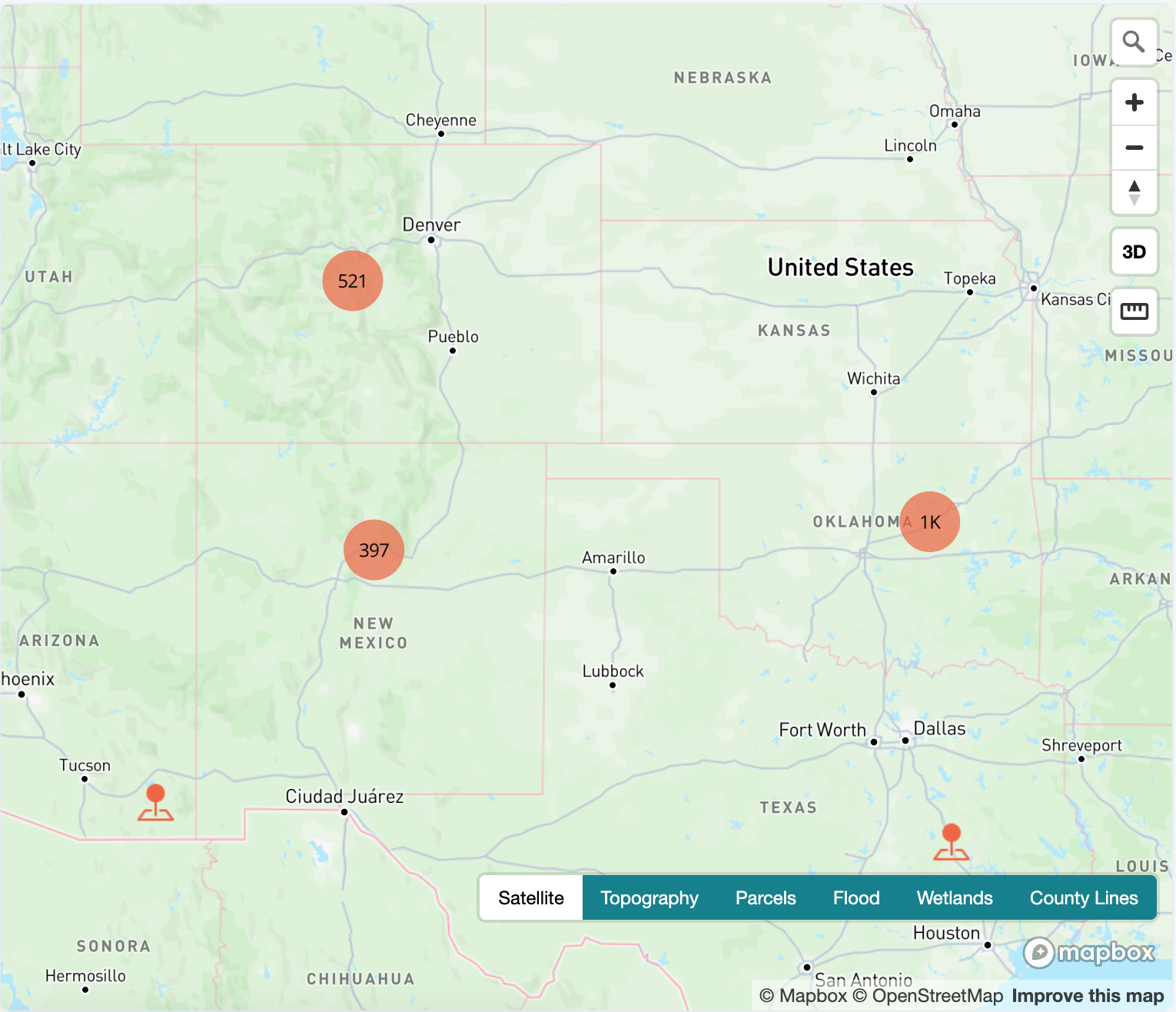Property Maps
In Pebble, you can access two types of mapping views: an overview map on the Properties page, showing all properties in your account, and an individual property map on each Property page, focusing on a single parcel. These mapping tools allow you to view, edit, and analyze your properties and their locations.
In this article:
Properties Page: Mapping Overview
The Properties page provides a high-level map view of all properties in your account, making it easy to identify trends and plan targeting strategies.
Viewing Property Locations
- Access the Properties page to view all imported property records on a map.
- The orange circles can help identify "hotspots" or regions with concentrated mailing efforts.
- Zoom in to specific neighbourhoods or areas to see parcel locations and surrounding property details.

Mapping Features on the Properties Page
- Flood Zone and Wetlands Layers: Visualize flood risks and wetlands areas in different colors, based on classification.
- County Lines: Toggle boundaries to understand property locations in relation to county limits.
- 3D View: Assess slopes and terrain by rotating the map to a 3D view.
- Topography and Measurement Tools: Check elevation changes and measure distances within parcels.
Property Page: Individual Parcel Maps
Each property in Pebble also has a dedicated map on its Property page, allowing a more focused view of that single parcel.
Adding Coordinates to the Property Page
The most common way to add the parcel map to a property page is by mapping the latitude and longitude when importing your records through the Campaigns section:

If your property does not have coordinates imported during the campaign creation steps, you can manually add coordinates to your property and locate the property on the map.
1. On the property details, simply click ' Edit Map'

2. Type the coordinates in the ' Search' field and hit 'Enter'. Choose a parcel of land, click on Set Boundary, and hit 'Save Changes
Note: The formatting of your coordinates should be latitude comma longitude with no spaces (e.g. 48.704060,18.396170).


Editing existing coordinates
When importing your properties to REI Pebble, if you include coordinates in your CSV file, an automatic one-acre square will appear around the center of these coordinates as you can see below:

You can then go to Properties > Map > Edit Map to customize the outline shape of your parcel.

Click on a parcel of land and click on Set Boundary to establish the boundaries of this property. Then, click on Save Changes to save the selected boundary.


If you have a KML file with existing properties, you can upload them, as well.

You can also drag the dots to customize the shape to your liking. You may need to zoom in on the map to get more detail.
Once you're done, click on Save Changes

Once this is done, you may want to download a KML file which you can then upload to Google Earth and you'll be able to source 3D imaging of your property to add to your marketing material. To download the file, simply click on Download KML and follow the Google Earth instructions here.
Note: Please keep in mind that uploading a KML file with existing properties will be considered pulling properties with the parcel selector and will be added to the parcel load charge

Pro Tip: You can also take a screenshot of your map and add that to your marketing images so potential buyers also have an aerial view of the property.
.png)